Existing User Log In
New User Registration
Register for a free account to gain full access to the VGChartz Network and join our thriving community.



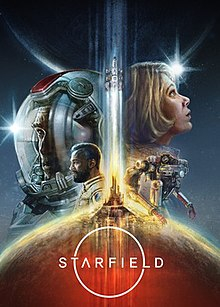

America - Front
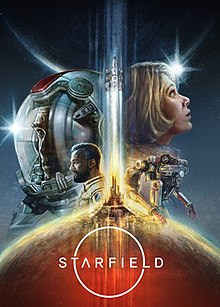

America - Back

Bethesda games have, in the past, been some of my favorite titles each generation. Fallout 3 and The Elder Scrolls IV: Oblivion pushed me to purchase a 7th generation console, and the amount of hours I’ve poured into The Elder Scrolls V: Skyrim on both the PS3 and PS4 is a bit embarrassing. Though I’ve been excited for Starfield since its announcement, I’ve also been a bit apprehensive as to what to expect out of Bethesda’s first new IP in almost 30 years. Todd Howard described Starfield as “Skyrim in space”, and while I clearly enjoy Skyrim, I wanted an experience that The Elder Scrolls and Fallout series couldn’t provide me.
The marketing and promotion of Starfield near its release provided more context as to what it probably was, or so I thought. It was said that the game would be a huge western-style RPG set in the vastness of space with a thousand planets to explore and huge amounts of lore. However, no amount of promotion could prepare me for the breadth of variety that is featured in the game. In reality, much like an iceberg, there is so much that lies beneath the surface level explanation of what Starfield is.
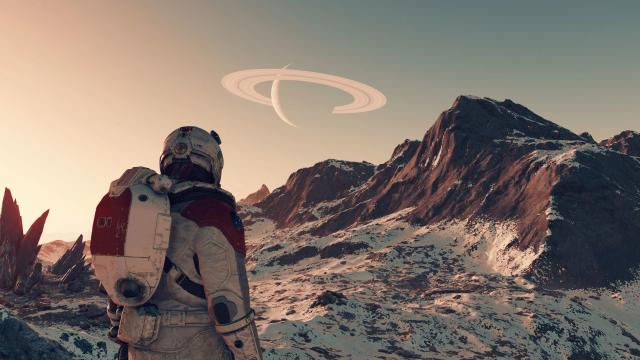
Now, to get this out of the way, if you were expecting a dramatic departure from the fundamental gameplay mechanics that Bethesda is known for, you'll be in for disappointment. Yes, there are extra layers, some simplified mechanics, and some general adjustments to the formula, but at its most basic level, much of it remains the same. The way you interact with NPCs and most objects in the world, the sheer amount of quests, the flexible playstyles and skill upgrade paths— it's all very familiar. Yet, Starfield seems to have more of all of these things. That said, if you don’t like the style of Bethesda titles then you probably won’t gravitate (pun intended) toward Starfield.
Before you begin, you need to create your character, and let me tell you, Starfield probably has the most robust character creator I’ve ever seen in a game. The amount of nuance found here is incredibly extensive. You can customize your jaw, eye color, face shape, basic body type, the style of your walk, hair style, skin complexion, jewelry, scars, skin blemishes, and even what pronouns you want used (to a degree). While a lot of these things I don’t personally care about, such as adding skin blemishes, I have to hand it to Bethesda for providing an option for those who want to use them.
In addition to the aesthetics of your character, you’ll also pick your background and optional traits. The background of your character acts as your class to a degree. Each background serves a specific purpose and comes with stat bonuses and an emphasis of its own. Of course, these backgrounds won’t pigeon-hole you into a specific play style, but they will absolutely make some play styles harder or easier based on what you pick. Lastly, you’ll decide your traits. These are entirely optional and give you the option of adding a perk or stat bonus. However, every trait also has a negative effect. Some are more severe than others. One trait gives you a home instantly, but also starts you off with a huge loan that needs to be paid off as soon as possible. The Extrovert and Introvert traits will increase your stats if you're traveling with or without companions, respectively. My favorite trait by far is Hero Worship, where you'll be given an “adoring fan” that will join your crew and offer gifts. The sacrifice is that this fan is one of the most deliberately annoying characters in the game. Their constant praise over the most minute actions is simultaneously a point of hilarity and eye-rolling disdain, which unfortunately only gets worse as the game goes on. Yet, I love it for some odd reason. The fact that it’s included is possibly a sardonic nod to Bethesda Game Studios’ own fans. Or good ol’ Todd Howard could just think it’s funny.
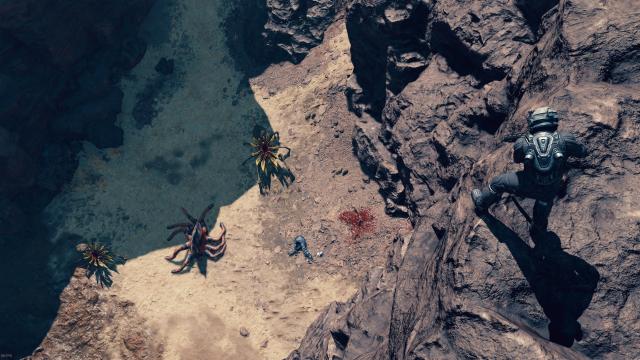
Afterwards, Starfield begins in a rather predictable fashion, particularly for Bethesda RPGs. You're hired to find an artifact. Upon finding and touching the artifact you see a vision. You’re then thrust into the task of collecting all of the other artifacts and, eventually, discovering the mysteries beyond the universe. I'll be honest, I wasn’t completely engaged with the main story missions initially and, as a narrative goes, I still think that Starfield’s main story leaves something to be desired. However, I highly recommend completing the first few main story missions before getting too side-tracked, as this is the only way to unlock Starfield Powers (I'll explain these in more in-depth later on).
Now, Starfield is a slow-burn. If you want a game that immediately pulls you in and excites you from the minute you start, you may need to temper your expectations. Truthfully, for the first 10-15 hours, it felt like a bit of a slog. I completed a couple of main story missions, and became distracted with some side-quests, but nothing really jumped out at me initially. However, the more you play, the more you realize how detailed this game is for its size and how varied the gameplay is. The amount of gameplay variety you have at hand is, honestly, a bit overwhelming. You can go and discover new planets, be a space pirate, rescue other ships, land and survey any planet’s fauna and flora, mine for resources, create an outpost, buy property, decorate your home or outpost, create a resource farm, smuggle contraband, build and customize your ship, complete the thousands upon thousands of quests at hand, or even simply stumble upon the hundreds of randomly generated quests (that honestly don’t always feel so random).
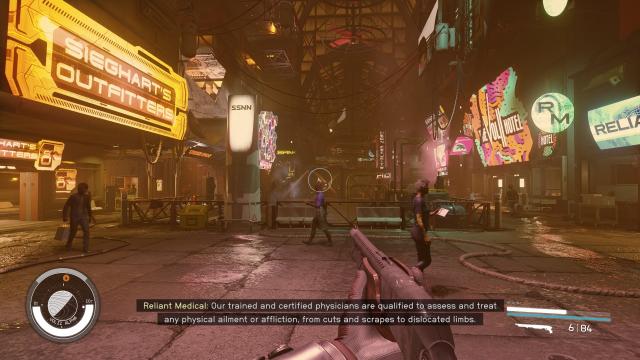
If the gameplay variety doesn’t get you, the scenic variety might. Planets aren’t all carbon copies of each other, though many have similarities. There are times where you're exploring a planet that feels pretty similar to one you’ve already explored in the past. However, there's a huge swath of other planets that carry their own distinct “theme”. For example, the planet Volii Alpha is an aquatic planet with a busy night city, appropriately named Neon City, that features a cyberpunk-like aesthetic. In contrast, the planet Akila’s main city features a more old western cowboy theme and is home to the Freestar Collective, an organization that seeks to protect several star systems and leans a bit into the western sheriff vibe. In this sense, Starfield almost flips into an entirely different game. I went from playing something resembling Cyberpunk 2077 to feeling more like Arthur Morgan from Red Dead Redemption 2.
Planets have their own atmospheres and biomes as well. Though, I will be honest, the actual gameplay implementations here are pretty minor. Some planets are colder or warmer, have less or more gravity, different compositions, or even different magnetic fields. But I wouldn’t say I had to pay attention to much of this; for the most part, it just means that you’ll have to wear your space suit and helmet (which I always wore anyway) and you’ll move more easily (i.e. jump farther) when there's less gravity. That said, this isn’t meant to be a space sim. I do think there is such a thing as system overload. Too many systems to pay attention to in a title and the game might start feeling like a chore to play, so I respect the decision that was made to reduce the harshness of these systems to allow for a slightly more casual experience. However, I also think that these systems would be absolutely perfect for a survival mode, something that was added to Fallout 4 in a free patch. Hopefully Bethesda Game Studios will add a similar mode to this game in the future.
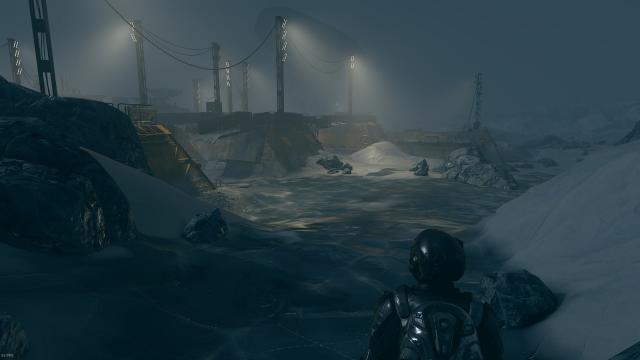
Even the quests themselves, and their stories, are also quite varied in both quality and content. One quest has you hiding from a Terrormorph and activating traps to kill it, while another has you playing detective, discovering clues and gathering potential witnesses for a future court case. You’ll go undercover to infiltrate a gang (and, of course, decide whether you want to be a good informant or a double agent). One mission has you talking with Genghis Kahn, Franklin Delano Roosevelt, and Amanirenas Queen of the African Kingdom of Kush (no, I’m not kidding). Unfortunately, since the highs are so high it makes the lows seem even worse by comparison, and this caused me to stop part way through certain quests due to lack of interest.
Still, I feel like this leans into the best part of Starfield, and the thing I had to come to grips with when I first started playing: if you begin to get bored, simply do something different. Go to a different planet, start mining, surveying, discovering, start a new quest, etc. The universe is really your oyster, and the heterogeneity of it ensures that you'll almost always find something else to capture your interest.
Even when you aren’t doing anything in particular, you may stumble upon something worthwhile or just plain memorable. I’ve jumped to a new star system randomly only to find myself hailed by someone getting torn up by the Crimson Fleet and having to decide whether I want to save them, extort them, ignore them, or kill them. This same person randomly showed up dozens of hours later in a completely different solar system. Another time I jumped to a new planet only to be hailed by an insurance agent trying to sell me insurance for my ship. Walking through the city you’ll overhear people talking, which can lead to quests or areas of interest. I cannot count the amount of times I walked over to a random NPC only to discover a person that had their own backstory, goals, personality, and questline. Very impressive stuff.
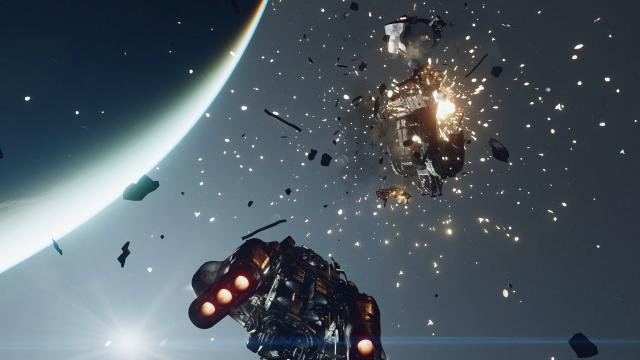
Of course, variety without a foundation doesn’t actually mean much. But the foundation in Starfield is a bit rocky. We’ll start with the bad: ship combat. Starfield’s ship combat is simple, tedious, and, at times, frustrating. It essentially boils down to getting behind the enemy, shooting them as much as possible, rinse and repeat. There aren’t really any maneuvers. You can slow down to turn faster or speed up to try and escape, but in the end, you really just want to get back on the enemies’ behind and shoot at them. If other people are shooting you, then you repair your ship. I know that this isn’t a space sim and I don’t necessarily mind simplified combat (the Star Fox series is fun but not exactly complicated). However, Bethesda’s games have almost always been about playing how you want, yet there isn’t really any other way to fight other ships. There are a few level up perks that ease combat frustration, but investing in those feels a bit like a double-edged sword. Yes, it makes ship combat easier, but it’s not like I want to invest into something I want to actively avoid.
Luckily, the gunplay is much more entertaining. Overall gunplay is improved from Fallout 4’s, which was itself a vast improvement on the Fallout games before it. Of course, there's no VATS or similar system that helps you with locking down those headshots, nor do you actually need it. On foot combat is responsive, snappy, and pretty satisfying. I wouldn’t put the gunplay above Call of Duty, Battlefield, or Doom, but it’s leaps and bounds ahead of the gunplay Bethesda Game Studios has used in the past. Enemies aren’t bullet sponges either, and the ability to use your jetpack in order to gain higher ground, or even jump over the enemies’ cover, brings some much appreciated maneuverability.
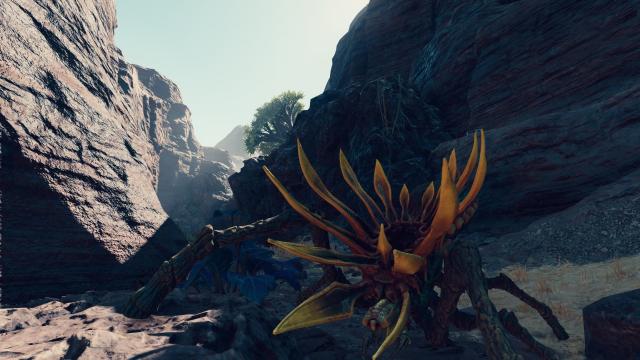
You don’t HAVE to use guns, either. In proper Bethesda form, you can choose your combat style. Knives, axes, and daggers are viable options… somewhat. There's a certain build I’d recommend you make in order to do so, and there aren’t really that many options for melee combat overall, but it's there for those who want it. Lastly, there are also Starfield Powers to aid with combat. Starfield Powers are obtained by visiting specific temples, and they can change your gameplay in key ways, both in and out of combat. You can create an area of anti-gravity, create a supernova blast, summon an alien, or even suck all of the oxygen from your enemies. In addition to these combat abilities, there are also a couple of non-combat abilities. Precognition, for example, lets you see into the future during conversations to help you pick the best responses.
Unfortunately, another misstep lies within the dialogue and conversations. The amount of dialogue spoken in the game is grandiose, sure, but the actual experience of having a conversation isn’t. You choose your sentence or question, the other person responds, and you always have this lingering feeling that the dialogue option you chose didn’t actually matter; they were always going to respond the same way regardless. In fact, it isn’t really a conversation, just lines of dialogue in a sequence that never actually feels impactful. In addition, the dialogue lines are, at best, unintentionally hilarious and, at worst, extremely cringey. Both of these ideas are conceptualized quite nicely through flirting. You can, of course, have romance partners. How you do this is simple: make choices that they like (i.e. try to save someone instead of kill them) and, eventually, you’ll be able to flirt with them by selecting the appropriately tagged dialogue box. Your character will then make weirdly sexual remarks in response to your partner’s very innocent questions or statements. Your partner will, in turn, barely acknowledge what you said, and will certainly not reciprocate. Eventually, you’ll be given the option to turn them into a romantic partner, but even if you don’t choose to flirt, you're still, quite easily, given the option to turn them into a romantic partner. In a sense, the outcome for most conversations is already decided for you, the rest is just filler.
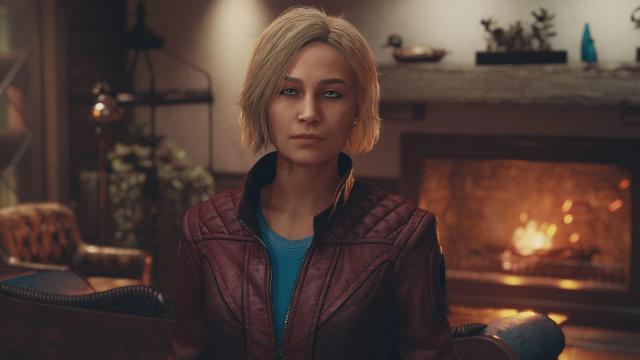
While graphically Starfield is a step above Bethesda’s past games, it appears that there wasn’t any actual work done on the A.I. side of things. Companions constantly got in the way of my shots during combat. So much so that I actually got rid of the Extrovert perk because I simply didn't want to have a companion by my side at all times anymore. Not only will they get in the way of shots, but they'll walk endlessly into people, doors, and walls. The enemy A.I. is no better. Shoot at an enemy and walk JUST out of their range and they’ll forget you existed. Even worse, I stood right in front of an enemy and began shooting them with an arc welder only for them to respond with “show yourself” as I slowly drained their health to zero over the course of ten or fifteen seconds. One time I found a ship that landed at an outpost filled with crewmembers and a captain. I boarded and daringly hijacked it and took off expecting some hostility or, at the very least, expressions of contempt or disapproval. Nothing happened, though. I now own the ship, filled with the same crew members, and none of them have said a word about it. I’m not expecting the most advanced A.I. ever, but please give me something better than mindless drones that barely react to someone committing grand theft auto with an entire spaceship.
Inventory system is yet another misstep. In Starfield you'll be managing your inventory a lot as you'll need to mine for materials. Though you can easily store a lot of your inventory in your ship, the trek back to it can get annoying when you’re over-encumbered and have to stop to catch your breath every so often. This is when I found the value of having a companion all over again, as the best thing they're used for is being a pack mule. When you're over-encumbered, just dump your junk onto Barrett (my pack mule of choice). It doesn’t help that the basic inventory system and user interface is uninspired and unintuitive. Everything sort of blends together, and there isn’t a good way to consolidate or categorize your items in any other way. In addition, there are some quality of life features that aren't as uniform as I would like them to be. For example, you can pretty easily sell any item from your ship's cargo, but selling an item that you’ve given to your pack mule (a.k.a. companion) requires you to talk to the companion, trade with them, retrieve the item again, and then go sell it. I’m not trying to pretend that any of this is the end of the world by itself, but it’s the sheer amount of times you have to manage your inventory while playing Starfield that turns this into an issue for me.
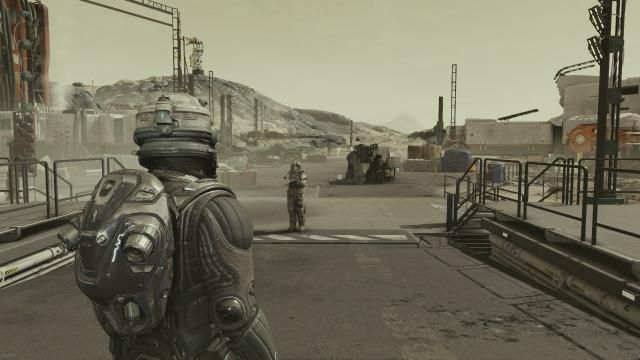
From a graphical standpoint, I’d say Starfield is merely solid. In proper Bethesda fashion, just about every object can be picked up and looked at. These objects have a shockingly high amount of detail. In fact, I haven’t been this impressed with the detail of mundane objects since Skyrim. This is true for characters as well. Every character has high geometric density, which is particularly excellent given the size of crowds in areas such as Atlantic City. Physically-based rendering is also rather impressive. The various leathers, plastics, and metals have both high quality textures added to them in combination with appropriate amounts of sheen or matte finishes, owing to a more realistic look.
Environments are stunningly gorgeous. The artistic design is simply phenomenal when it comes to the landscapes. The global illumination system works perfectly with the planet's own atmosphere and biome to create a combined sense of wonder and realism. There's this sense that what you're seeing could never be possible on Earth, but could absolutely be possible on a planet somewhere. Accompanying moons or nearby planets will also be visible beyond the planet's atmosphere, which heightens the sense of beauty while also reinforcing a sense of discovery. Not only do you see a beautiful neighboring moon or planet reflecting light from its own sun (much like our own moon does), but you can go there and check out what it looks like on foot.
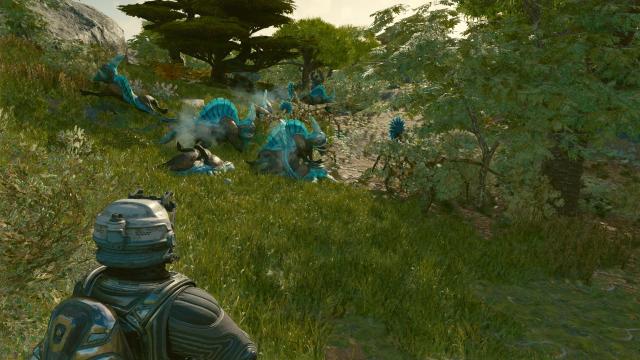
Facial animations are… fine. I wouldn’t call them top notch on a technical level. However, it’s important to remember just how big Starfield is and how many individual people and lines of dialogue there are in the game. Facial animations aren't recorded with motion capture, nor should we expect them to be. Instead, they seem to be using some good use of keyframing, which allows for more flexibility and universal applications across different characters. For the most part, it works pretty well. Lips sync well to the dialogue, eyes will follow the player’s movements appropriately, and facial animations behave accordingly. There is still an issue with the look of the faces themselves, though. A general soullessness that feels a bit eerie despite the serviceable facial animations. What’s important here for me, though, is consistency. In my review of Final Fantasy XVI I found the facial animation inconsistency to be jarring. You’d have a cutscene with gorgeous and realistic facial animations during story cutscenes, but they'd go completely out of sync with almost randomized mouth movements in the following scene. Sure, Starfield doesn’t have the high quality of the former, but it also has much better animations than the latter, with the added benefit of not feeling jerked back and forth between the two.
Other graphical details and rendering techniques feel more like relics of the past in comparison to the impressive global illumination system and high quality textures. Reflections are one key example. There are no raytraced reflections in Starfield. Instead, the game relies on cubemaps, which are flat textures laid onto an unfolded cube, with each representing a reflection of the environment. It's far less intensive than ray tracing, of course, but comes with its own sacrifices. When used appropriately, cube maps can be a low-cost alternative to ray tracing, without any of the occlusion artifacting present in screen space reflections. However, the cubemaps used in Starfield are so incredibly low resolution that I’m not entirely certain whether it’s glitched or not. Without exaggeration, I will say that some of the cubemap textures I saw would not be out of place in a game running on a PS2. Luckily, most of the cubemaps are not THAT noticeable, but this is clearly an area that Bethesda will need to address in its next game (or via a patch for this one if possible).
Since Starfield is such a big title, it’s no surprise that there are reused assets, but the amount of assets that are reused goes a bit above what’s typical in a modern release. The look and feel of a lot of planets’ surfaces feels unique from one to the next, but buildings, caves, or really anything that isn’t just the planet's immediate surface all feel like they're made by the same architect. I happened upon a cave one day and saved the game before going to bed. Upon returning and exploring it, I was absolutely sure I accidentally loaded up an earlier save file because I had, without a doubt, explored this exact same cave before. This happened multiple times. Then I began to notice that research stations, mining facilities, outposts, collectible flora and fauna are all incredibly similar with little actual variation. Don’t get me wrong, reusing assets is an incredibly common tactic in the videogame industry, and a necessary one at that. However, Starfield takes that practice to an extreme, and once you break that barrier and begin to notice, the feeling of déjà vu will be omnipresent.
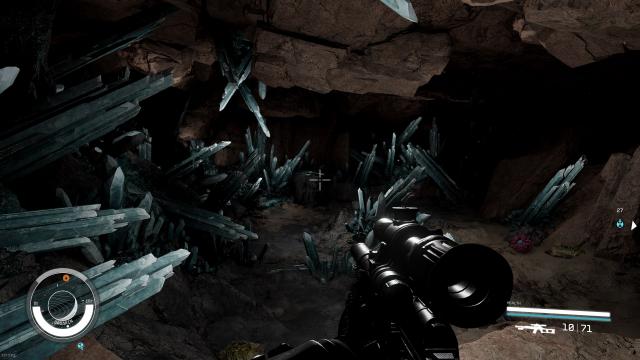
PC options are fairly limited. There are no options for some rather basic stuff, such as field of view sliders or even the option for DLSS. The performance I had on PC also wasn't great, though that’s likely an effect of my hardware specifically. It’s fairly well known that Starfield has worse performance on hardware that isn't made by AMD, and I am unfortunately rocking an RTX 3070 and an Intel i9-10850k. This opens up a different can of worms that I’m not going to get into within the contents of this review, however. Still, it deserves a mention. Starfield is sponsored by AMD, and I just can’t shake the feeling that this, whether by design or by effect, caused worse performance on AMD’s competitors' products by a significant margin. The lack of DLSS is also an unfortunate by-product of that, and one that, in my opinion, should be officially patched by the developers and should not require the use of fan made mods.
Last, and surprisingly least, I would like to discuss glitches and bugs. Bugs and Bethesda go together like peanut butter and jam, yet interestingly enough, there really isn’t that much to talk about here. I did encounter a handful of bugs and glitches. One glitch caused hints to stay stuck on my screen, but was easily resolved by quitting to my desktop and reopening the game. Occasionally during dialogue sequences the camera will zoom in on a character's mouth or another character will get in the way, but the effect this has on the overall gameplay is very minimal. I did encounter a character fall into place during a cutscene, but this occurred exactly twice during my playthrough and I haven’t noticed it since. I want to praise Bethesda here for a minute. It isn’t easy creating a game that's devoid of bugs. In fact, it’s downright impossible. But creating one as large as Starfield with so few bugs deserves to be recognized.
I know that I’ve had a lot of negative things to say about Starfield, but the fact of the matter is that there is so much to enjoy despite these flaws. The amount of content completely astounds me at times; I don’t think I'll ever run out of things to do in Starfield. In fact, it's one of those games I may keep permanently installed onto my PC just to jump back in and play for a few hours every now and again. The problem is that it's so huge that it feels Bethesda Game Studios either kept stuffing ideas and content into the game without fine-tuning the basics, or the team had such lofty goals that it had to cut back elements in order to actually ship the product. Still, this is a quality experience overall. Those who are fans of Bethesda’s past games will likely be able to look past most of these flaws quite easily. For those who have little to no experience with these types of games, though: just know that underneath Starfield’s planetary rocky exterior lies a core that will attract you like a magnet. You may just need to drill long enough to get there.









